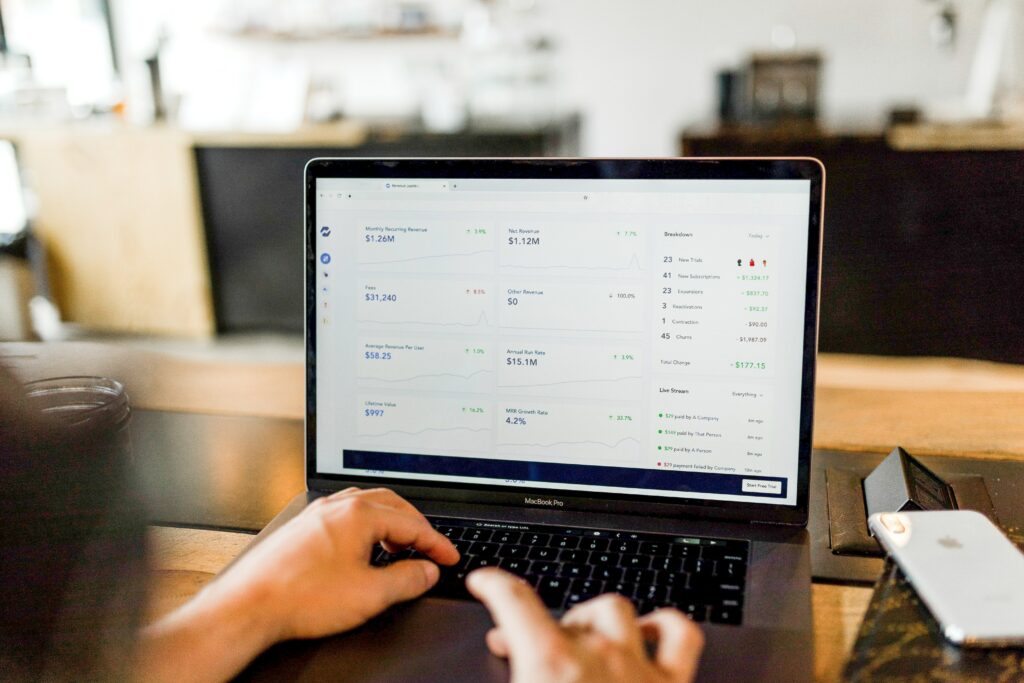In this article, we explore the future of mobile payment systems and whether your smartphone could potentially replace your wallet. With the increasing popularity of mobile payment apps and the convenience they offer, many people are wondering if traditional wallets will soon be a thing of the past. From contactless payments to biometric authentication, we’ll take a closer look at the advancements in technology that are paving the way for a cashless society. Get ready to discover the exciting possibilities that lie ahead in the world of mobile payments!

Benefits of Mobile Payment Systems
Convenience
Mobile payment systems offer unmatched convenience for users. Gone are the days of fumbling through your wallet for the right card or counting out the exact change. With mobile payment systems, all you need is your smartphone. Whether you’re making a purchase at a physical store or shopping online, simply open the mobile payment app, authenticate yourself, and complete the transaction within seconds. No more carrying around physical cards or worrying about forgetting them at home. Mobile payment systems make your life easier by bringing all your payment options into one place.
Security
Security is a top concern when it comes to financial transactions, and mobile payment systems address this concern effectively. Unlike traditional payment methods that may require you to hand over your credit card or enter card details manually, mobile payment systems use advanced encryption techniques to ensure the safety of your sensitive information. With features like tokenization and biometric authentication, mobile payments provide an extra layer of security, making it harder for hackers to access your data. Additionally, if you misplace your smartphone, you can remotely disable mobile payment capabilities, preventing unauthorized access.
Speed
Time is valuable, and mobile payment systems allow you to streamline your transactions, saving you precious minutes. Instead of swiping your card or handing over cash, a simple tap or scan is all it takes to complete a mobile payment. This speed is particularly beneficial in crowded places or during rush hours when every second counts. Moreover, mobile payment systems also eliminate the need for manual entry of payment information, further reducing the time it takes to complete a transaction. By leveraging technology, mobile payment systems offer a fast and efficient way to make payments.
Accessibility
Mobile payment systems are designed to be accessible to everyone, regardless of their financial situation or background. They provide a viable alternative for those who may not have easy access to traditional banking services. For individuals without a bank account, mobile payment apps act as a mobile wallet, allowing them to store funds and make transactions. This accessibility promotes financial inclusion and empowers individuals to participate fully in the economy. Additionally, mobile payment systems can be used by people with disabilities, as they offer features like voice commands and alternative authentication methods, ensuring that no one is left behind.
Different Types of Mobile Payment Systems
NFC-based Systems
Near Field Communication (NFC) is a technology that enables contactless communication between devices. NFC-based mobile payment systems allow users to make payments by placing their smartphones near a compatible payment terminal. This proximity-based technology makes the payment process quick and convenient. It is widely supported by various smartphones and payment networks, making it a popular choice for mobile payments.
QR Code Systems
QR code-based mobile payment systems utilize Quick Response (QR) codes to facilitate transactions. Users scan the QR code displayed at the payment terminal using their mobile payment app, and the transaction is processed. QR codes enable seamless integration of mobile payments with existing infrastructure, as they can be easily generated and displayed on screens or printed materials. This makes QR code systems a cost-effective solution for businesses to adopt mobile payments.
Mobile Wallet Apps
Mobile wallet apps, such as Apple Pay and Google Pay, are downloadable applications that store users’ payment information securely. These apps allow users to make payments using their smartphones at participating merchants. Mobile wallet apps often support multiple payment methods, including credit and debit cards, as well as loyalty cards. By consolidating all payment options into a single app, mobile wallets streamline the payment process and provide a convenient way to manage finances on the go.
SMS-based Systems
SMS-based mobile payment systems rely on text messaging to facilitate transactions. Users send a specific code or keyword to a designated number, and the payment is processed accordingly. This system is commonly used in regions with limited smartphones or internet connectivity. SMS-based systems provide a simple and accessible way to make mobile payments, even for those with basic feature phones.
Major Players in the Mobile Payment Industry
Apple Pay
Apple Pay is a mobile payment system developed by Apple. It allows users to make payments using their iPhones, iPads, Apple Watches, and Macs at supported merchants. Apple Pay leverages NFC technology and offers additional security through its biometric authentication feature, Face ID or Touch ID. With a growing number of merchants accepting Apple Pay, it has become a leading player in the mobile payment industry.
Google Pay
Google Pay, formerly known as Android Pay, is a mobile payment system developed by Google. It enables users to make payments using their Android smartphones or wearable devices. Google Pay supports both NFC-based payments and QR code-based payments. In addition to its payment capabilities, Google Pay also integrates loyalty programs and offers personalized recommendations to enhance the overall payment experience.
Samsung Pay
Samsung Pay is a mobile payment system offered by Samsung. What sets Samsung Pay apart is its compatibility with a wide range of payment terminals, including both NFC-enabled and traditional magnetic stripe terminals. This enables users to make payments at almost any point of sale terminal. Samsung Pay also supports biometric authentication and offers a secure and convenient mobile payment experience for Samsung device users.
PayPal
While primarily known as an online payment service, PayPal has also ventured into the mobile payment space. PayPal’s mobile payment system allows users to make secure transactions using their smartphones. With PayPal, users can link their bank accounts or credit cards, and the payment can be made with just a few taps. PayPal’s extensive network of merchants makes it a versatile and widely accepted mobile payment solution.
Integration of Mobile Payment Systems
Retail Stores
One of the key areas where mobile payment systems have seen widespread adoption is in retail stores. Major retailers around the world have embraced mobile payments, allowing customers to make purchases using their smartphones. By integrating mobile payment systems into their point of sale terminals, retailers offer a faster and more convenient checkout experience for their customers. This integration also enables the seamless redemption of coupons, discounts, and loyalty rewards, further enhancing the overall shopping experience.
Online Shopping
The rise of e-commerce has significantly contributed to the growth of mobile payment systems. Online shopping platforms and marketplaces have integrated mobile payment options, making it easy for customers to complete transactions from the comfort of their smartphones. Mobile payment systems provide a secure and efficient way to make online payments, eliminating the need to enter card details or remember multiple passwords.
Peer-to-Peer Transactions
Mobile payment systems have revolutionized peer-to-peer transactions by enabling users to send and receive money instantly. Whether you need to split a bill with friends, reimburse a colleague, or send money to family members, mobile payment apps offer a convenient solution. With just a few taps, you can transfer funds to another person’s mobile wallet, often without any additional fees. This eliminates the need for cash or checks and accelerates the payment process.
Transportation Services
Mobile payment systems have also found their place in the transportation industry. Ride-hailing services and public transportation providers have integrated mobile payment options, allowing passengers to conveniently pay for their trips using their smartphones. This eliminates the need for physical tickets or cash, simplifying the entire process for both passengers and service providers. Mobile payments in transportation services offer a seamless and efficient way to travel, saving time and reducing the hassle associated with traditional payment methods.

Challenges and Concerns with Mobile Payment Systems
Security Risks
While mobile payment systems offer enhanced security compared to traditional payment methods, they are not immune to risks. Cybercriminals may attempt to exploit vulnerabilities in mobile apps, hacking into users’ accounts and stealing sensitive information. Additionally, users’ smartphones can be lost or stolen, potentially exposing their payment credentials. To mitigate these risks, providers of mobile payment systems must continuously invest in robust security measures, including encryption, multi-factor authentication, and fraud detection algorithms.
Lack of Standardization
The mobile payment industry is still evolving, and one of the challenges it faces is the lack of standardization. Various payment systems and technologies coexist, making it difficult for businesses and consumers to choose a compatible platform. Different countries may have varying levels of acceptance and infrastructure, further complicating the adoption of mobile payments. Standardization efforts are crucial to ensure interoperability across different systems and promote the widespread acceptance of mobile payments.
Consumer Adoption
Adopting new payment methods requires a change in consumer behavior, which can be met with resistance or hesitation. While the popularity of mobile payment systems is growing, there is still a considerable portion of the population who prefer traditional payment methods. Some consumers may have concerns about the security of mobile payments or may be unfamiliar with the technology. Proper education and awareness campaigns are necessary to increase consumer confidence and drive the adoption of mobile payment systems.
Infrastructure Limitations
To facilitate mobile payments, a robust infrastructure is required. This includes reliable internet connectivity, payment terminals capable of supporting contactless payments, and interoperability between different systems. These infrastructure requirements can pose challenges, particularly in developing regions or rural areas where access to technology and connectivity may be limited. Ensuring widespread coverage and upgrading existing infrastructure are essential to enable the seamless adoption of mobile payment systems.
The Role of Mobile Payment Systems in Developing Countries
Financial Inclusion
In many developing countries, a significant portion of the population remains unbanked or underbanked. Mobile payment systems offer a promising solution to address this issue by providing a mobile wallet accessible to anyone with a smartphone. By leveraging mobile payment technology, individuals without access to traditional banking services now have a secure and convenient way to make transactions, receive payments, and store funds. Mobile payment systems bridge the gap between the formal and informal economy, fostering financial inclusion and empowering individuals to participate in the digital economy.
Convenience for Unbanked Population
For the unbanked population in developing countries, mobile payment systems offer an alternative to cash-based transactions. Cash can be cumbersome to carry, and the lack of banking services restricts access to financial products and services. With mobile payment systems, individuals can make payments, send or receive money, pay bills, and even access loans or insurance products. Mobile payment apps provide a convenient and efficient way for the unbanked population to manage their finances and improve their financial well-being.
Boosting Economic Growth
Mobile payment systems have the potential to significantly impact economic growth in developing countries. By digitizing transactions and reducing reliance on cash, mobile payments can drive financial transparency, reduce corruption, and enhance tax collection. The ease of conducting business and making payments also promotes entrepreneurship and encourages the growth of small businesses. Additionally, mobile payment systems enable more efficient supply chains and facilitate cross-border transactions, opening up new opportunities for trade and commerce.

Impact of COVID-19 on Mobile Payment Systems
Shift towards Contactless Payments
The COVID-19 pandemic has accelerated the adoption of contactless payment methods, including mobile payments. With the heightened awareness of hygiene and the need to limit physical contact, consumers have increasingly embraced contactless transactions using their smartphones. Mobile payment systems, with their touchless capabilities, have become the preferred payment method for many individuals. This shift in consumer behavior is expected to have a lasting impact even after the pandemic subsides, as contactless payments become the new norm.
Increased Demand for Online Shopping
With lockdowns and social distancing measures in place, online shopping has experienced a surge in demand. Mobile payment systems have played a crucial role in facilitating these online transactions. As consumers turned to e-commerce for their shopping needs, mobile payment apps provided a secure and convenient way to make payments. By enabling seamless integration with online platforms and offering enhanced security features, mobile payment systems have become an essential component of the online shopping experience.
Hygiene and Safety Concerns
The pandemic highlighted the importance of hygiene and safety in all aspects of life, including financial transactions. The ability to make payments using mobile devices minimizes the need to handle physical cash or touch payment terminals, reducing the risk of virus transmission. Mobile payment systems provide a touch-free and more hygienic alternative, giving consumers peace of mind while making their purchases. This heightened focus on hygiene and safety is likely to have a long-term impact on the preference for mobile payment systems.
Future Trends in Mobile Payment Systems
Biometric Authentication
Biometric authentication, such as fingerprint scanning or facial recognition, is gaining traction in mobile payment systems. The use of biometrics adds an extra layer of security, as it ensures that only authorized individuals can access and use mobile payment apps. Biometric authentication eliminates the need for passwords or PINs, making transactions more convenient and secure. As biometric technology continues to improve and become more prevalent, it is expected to become a standard feature in mobile payment systems.
Blockchain Technology
Blockchain technology has the potential to revolutionize mobile payments by providing a decentralized and secure platform for transactions. By using a distributed ledger, blockchain ensures transparency, immutability, and eliminates the need for intermediaries. Blockchain-based mobile payment systems can reduce transaction costs, increase efficiency, and enhance trust between parties. Although still in the early stages of development, the adoption of blockchain technology in mobile payments holds great promise for the future.
Integration with IoT Devices
The Internet of Things (IoT) is a rapidly expanding network of connected devices, ranging from smartwatches to home appliances. Mobile payment systems can leverage IoT technology to enable even more seamless transactions. For example, smart refrigerators equipped with payment capabilities can automatically order groceries and make payments. With the proliferation of IoT devices, integrating mobile payment systems into these devices can further simplify and enhance the payment experience.
Virtual Currency Adoption
The rise of cryptocurrencies and virtual currencies has the potential to reshape the mobile payment landscape. Mobile payment systems could integrate support for these digital currencies, allowing users to make transactions using cryptocurrency. This would provide users with more options for payment and potentially reduce reliance on traditional fiat currencies. As virtual currencies continue to gain mainstream acceptance, the integration of these currencies into mobile payment systems may become more common.
Regulations and Legal Considerations
Data Privacy
As mobile payment systems collect and store sensitive user data, privacy regulations and data protection become paramount. Providers of mobile payment systems must comply with privacy laws to safeguard user information and prevent unauthorized access. Robust encryption techniques, transparent privacy policies, and user consent mechanisms are essential for maintaining data privacy and building trust in mobile payment systems.
Fraud Prevention
Efforts to prevent fraud are crucial to maintain the security and integrity of mobile payment systems. Providers must implement robust fraud detection measures, such as real-time transaction monitoring and anomaly detection algorithms, to identify and prevent fraudulent activities. Additionally, educating users about common fraud schemes and providing guidelines on secure practices can help users protect themselves from potential risks.
Compliance with Financial Regulations
Mobile payment systems often involve the processing of financial transactions, which requires compliance with relevant financial regulations and laws. Providers must adhere to anti-money laundering (AML) and know your customer (KYC) regulations to prevent illegal financial activities. Collaborating with financial institutions and regulatory bodies is essential to ensure compliance and create a trustworthy environment for mobile payments.
Conclusion
Mobile payment systems have transformed the way we make transactions, offering unparalleled convenience, security, and speed. Whether it’s using NFC-based systems, scanning QR codes, or utilizing mobile wallet apps, the use of smartphones as a modern-day wallet has numerous benefits. Major players such as Apple Pay, Google Pay, Samsung Pay, and PayPal have revolutionized the mobile payment industry, integrating with various sectors such as retail stores, online shopping, peer-to-peer transactions, and transportation services.
While mobile payment systems face challenges, such as security risks and lack of standardization, they continue to evolve and address these concerns. In developing countries, mobile payment systems play a vital role in promoting financial inclusion, facilitating access to financial services, and boosting economic growth. The COVID-19 pandemic has further accelerated the adoption of mobile payments, with a shift towards contactless transactions and increased demand for online shopping.
Looking ahead, biometric authentication, blockchain technology, integration with IoT devices, and virtual currency adoption are among the future trends that will shape mobile payment systems. As these systems continue to advance, regulations and legal considerations surrounding data privacy, fraud prevention, and compliance with financial regulations must be enforced to maintain trust and protect users.
In conclusion, mobile payment systems have revolutionized the way we handle financial transactions, bringing convenience, security, and efficiency to our fingertips. With ongoing advancements and innovations, mobile payments are poised to play an even more significant role in shaping the future of financial transactions.
